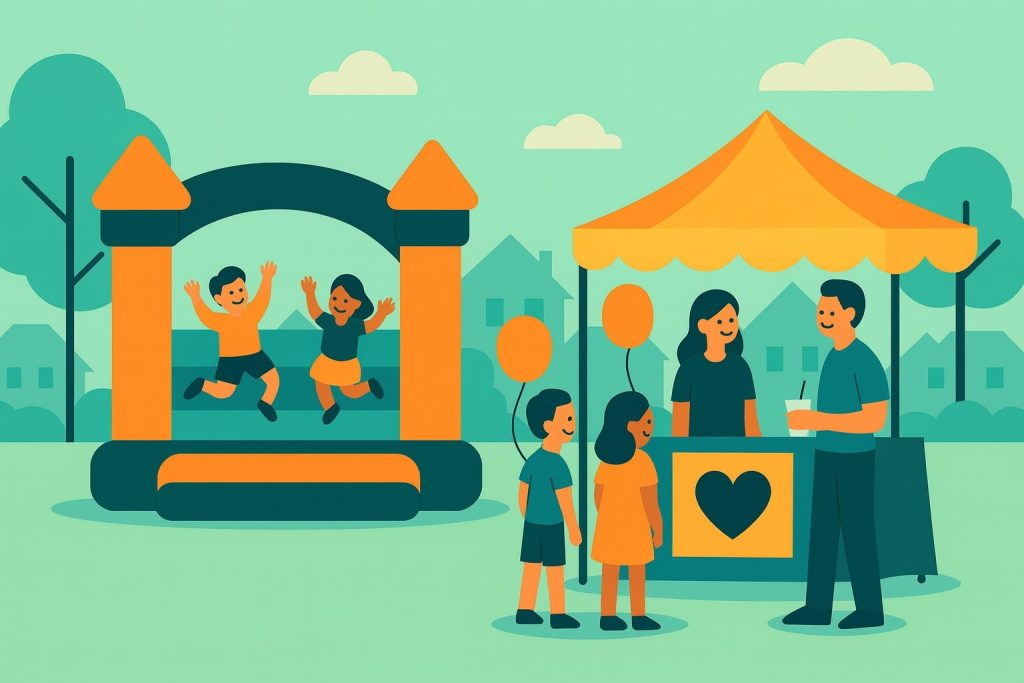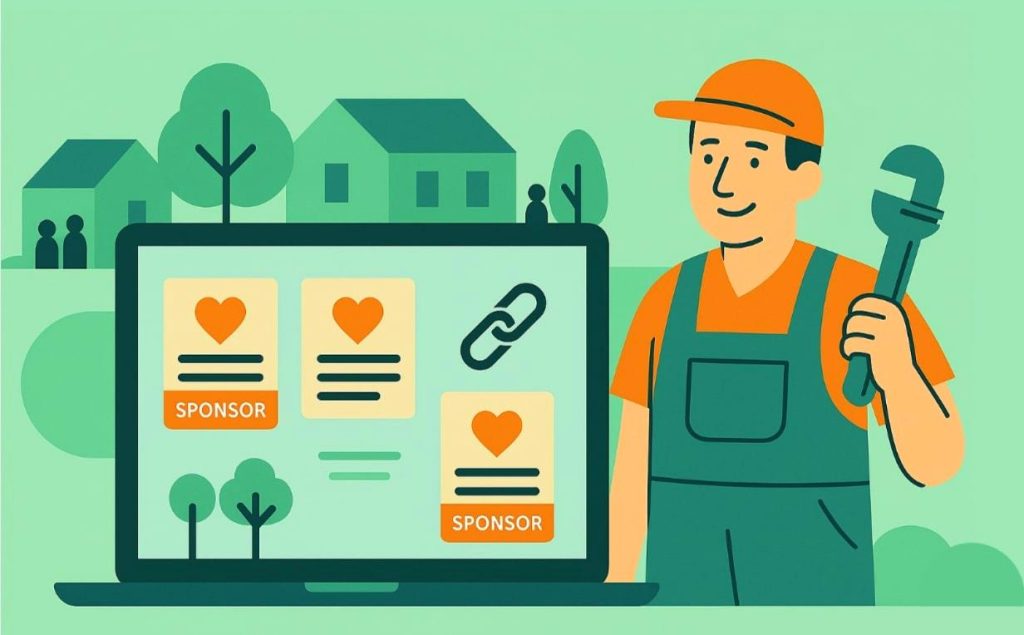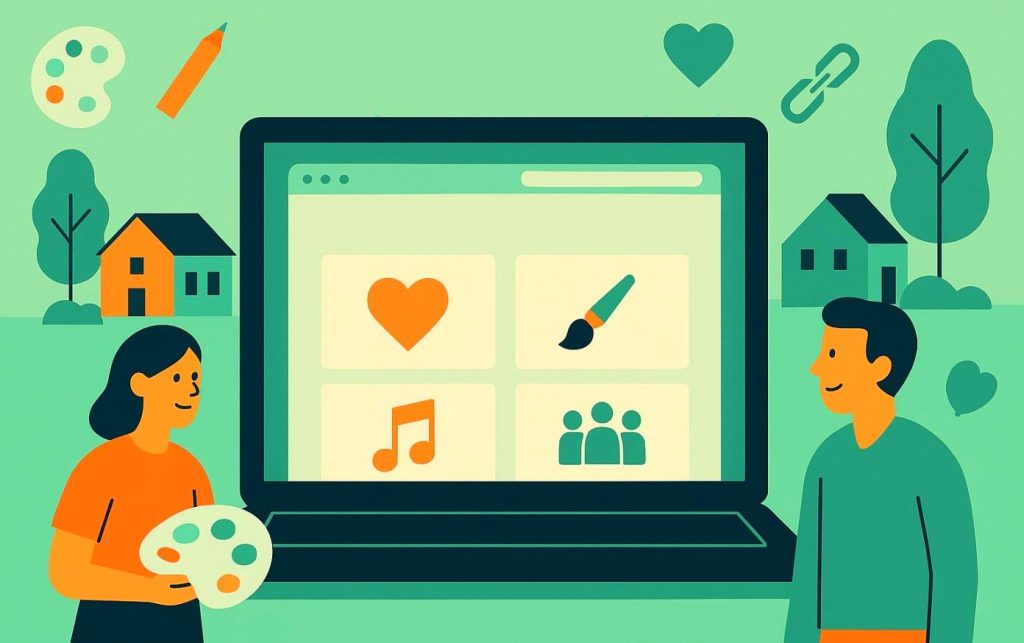The Zip Episode 20
Welcome to episode 20 (woah!) of The Zip – a podcast on the ecosystem of Local. Every week I talk to a local marketer, journalist, or organizer on their expertise and what makes their community great. Today is Wednesday, December 7, 2017.
In this episode, we’re taking a trip. To New Jersey. New Jersey is… honestly it’s hard to describe New Jersey. It’s a weird mix. It’s close enough to New York City that there are tastes of metropolitan all around. You know, It’s not too far for Manhattanites to travel there by train, or vice versa, so there’s a shared sense of community there. But New Jersey is very suburban. There are lawns and strip malls … and so much commuter traffic. Soo much traffic.
Today I’m speaking with someone who was born and raised in the Garden State, and whose career is now focused on reporting and nonfiction storytelling in New Jersey. Simon Galperin is early in his career – he’s still in grad school, set to graduate from the City University of New York’s Journalism School this month. But when I met him at a journalism event earlier this year, I could tell he was an innovator in the space, and I’m excited to share his ideas here on The Zip. Apart from his work with Propublica – a n independent, non-profit newsroom that produces investigative journalism in the public interest.
Simon has founded two journalism projects already. One is Muckgers, a digital media outlet for Rutgers alumni, and the others is a project called Info Districts, which we’ll dive into in this conversation.
Overall, my favorite thing about talking to journalists is that they tend to see the big picture of their general beat, or area of expertise. Like Jesse Williams of Scalawag in episode 10, or Mary Miller of the NC Newsroom Cooperative, who I spoke to in ep 3 – local journalists are great sources of knowledge on the facts and goings on, but also on the FEEL of their cities. They report on 20 year trends, or they know the local spin on national movements, which makes them such interesting resources for someone interested in learning more about a local space. And Simon’s area of expertise, interestingly enough, is local journalism itself. So in this conversation, we’ll talk about the industry as Simon sees it, and how he, as a relatively young journalist, is planning his career, considering some of the huge shake-ups in the industry.
And one final thing before we jump in, because it’ll be relevant later… for my ideal day of meals with interesting people, I’d have
Breakfast: Ira Glass of This American Life
Lunch: Roxanne Gay, essayist, and writer of Bad Feminist, great and funny and highly insightful book
Dinner: Sheryl Sandberg, Marissa Mayer and Sophia Amoruso – three very driven female entrepreneurs/executives whom I’d love to learn from. Plus Sophia is a podcaster, so I’d let her drive some of the questions.
Drinks: Heather Havrilesky of Ask Polly and How to be a person in the world
Okay – let’s head into the interview.
Welcome to the Zip.
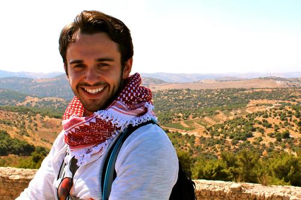
Hannay: Simon, thank you so much for being on The Zip today.
Galperin: It’s my pleasure.
Hannay: You and I met almost a month ago now at the Sustain Local Journalism Conference in New Jersey, and unlike me, your primary job is as a local journalist. So can you start off by introducing me and the listeners to the publications that you work for and their missions?
Galperin: Sure, I have to say though that I’m in local journalism, not necessarily a local journalist.
Hannay: Interesting, what is the distinction?
Galperin: It’s kind of like a square and a rectangle…
Hannay: OK.
Galperin: …where local journalists are in local journalism but not everyone in local journalism is a journalist.
Hannay: OK, got it.
Galperin: I’m more, my work has been sort of in strategy and media management mostly. Though I do have some of the skillsets you would associate with a local journalist. Besides the point, the organizations that I’m working with are; I’m the co-founder of Muckers which is a not-for-profit media organization that serves Rutgers University in New Jersey. I’m working at ProPublica which is a non-profit newsroom which produces investigative journalism. I’m there working with their business development director. I’m the partner on a project called Info Districts, which seeks to build news information services to serve the unique needs of local communities. And on top of all that I’m also completing a graduate degree at the CUNY Graduate School of Journalism in New York City.
Hannay: Man, do you ever sleep or do things un-journalism related?
Galperin: Unfortunately, no. I’m constantly thinking about it and dreaming about it. Recently in the last few weeks I’ve had to get some assignments done and sort of work through the night because while I’m sleeping I’m also dreaming about the assignment.
Hannay: Do you come up with really cool ideas?
Galperin: I try to.
Hannay: OK, that’s good. So you’re putting yourself to work in all states. That’s awesome. From my perspective, the Sustain Local Journalism Conference, it focuses a lot on how journalists can work with marketers and I think that’s because, they do an annual conference on local journalism and the topic of that year was “sustain” so how do we make money? I found this really interesting as a marketer but I think a lot of people who attended who were a little more on the journalism side were a little disappointed that is seems like the big answer to the “sustain” question was: “Devote more time and recourses to sponsor pieces.” or to working with brands. Where do you fall in that spectrum and how did you feel about that approach at the conference?
Galperin: Sustain Local did a really good job at representing the dichotomy in journalism sustainability, right? On one end, you have the not-for-profit community and impact-focused publishers and news organizations. And on the other, these individuals and organizations that see providing news and information as a business primarily. I don’t think that there is anything inherently wrong with that, with trying to think up ways to finance local journalism, but the community-minded folks I think see things like native advertising and sponsored content as one step too far and I would tend to agree.
Hannay: Got it. Do you think that there are other options or better options for revenue generation in local journalism that weren’t discussed as much or will be growing out in the future?
Galperin: I don’t have a solution, but I think I’ve got a good handle on the general direction, and I think that is towards community and engagement and impact. There was a panel on engagement at Sustain Local and it was pretty well attended but I think that people in the room still think about the bottom line which is totally understandable. To them, “How does engagement drive revenue?” is the question, but I tend to think that local journalists and journalism thinkers sort of shifted their metrics of success from financial to social and civic; that we’d be able to find a new equation for journalism sustainability right were journalists can also put dinner on the table while serving their communities.
Hannay: That would be nice. I feel like every career should at least, you don’t have to become rich but be able to put dinner on the table. That’s interesting because you’re working at ProPublica and one of the session I did attend, someone from ProPublica was talking about one way that they’re making additional revenue which was through sharing and aggregating a lot of data that they’d used for this one story, they had done this one really in-depth story and they all of this data on it, then they would put that in a database and sold that to business who were looking for that information since they had this information that no one else did. Is that something that you think you’re working on a bit more at ProPublica or you think that could be a good option as well?
Galperin: I think that panel was Celeste LeCompte who is the director of business development and Partnerships at ProPublica. I’m working under her, which I have to say that I’m blessed to have that opportunity. That’s sort of her whole perspective on things is, and I can’t speak for her, but from what I can see is her whole perspective on things is: How can we take the DNA of the think that journalists are already doing and how can we splice and slice and put things together in a different way and potentially drive revenue from it? And I think that is the right way for us to be thinking about things.
Hannay: Part of the reason I invited you on this podcast is not only because of your current roles in local journalism but also because of how much I enjoyed speaking with you at the conference about the future of your industry. For example, I read recently you wrote on medium.com a few days ago, I think in which you asked young journalists in your community to contribute via surveys or on a Facebook group and let you know what resources they needed. So what are you hoping to learn and develop for this project and how do you see yourself as someone who is bringing together local journalists?
Galperin: That project is a part of my Master’s in Social Journalism at the CUNY Graduate School of Journalism and I feel very strongly that the most effective way to change the direction of journalism in the media is to give emerging journalists and media makers the best opportunities to learn and practice. And I think that journalism education is at the forefront of offering those opportunities. So what I want to know is; who can I help them? “How can I help you” is ultimately my question to student journalists and media makers and their educators because journalism education is not easy. There are legacy issues that you deal with. It’s not necessarily a battle against the two sides. We need to figure out a way to come together and make it more effective for the students. So that’s what I’m trying to do and I’m hoping that the New Jersey media community will respond to that. I co-founded Muckers as an undergraduate in an effort to give myself space and room for practice storytelling in journalism and I think that every single journalism undergraduate or media studies undergraduate should have that same opportunity.
Hannay: It might be kind of early in your research for you to have definitive results yet, but do you have any hunches because as a journalism yourself, former and current, where there things that you felt like “I wish the community would give me this. I wish I had help with this.” Are there resources that you have a hunch could improve the resources that students have?
Galperin: Absolutely. When I graduated in 2014 I received my bachelor’s in journalism media studies is it seems like, forever ago from Rutgers University I had no clue that I could turn what was then a relatively recent, growing and sort of vibrant publication into a potential business endeavor right now or a side income. Entrepreneurial skills and business skills and media management was something I wish I had had. Ultimately the question is, it might have been available to me but I just didn’t know about it. I think that’s another key reason I hope to support young journalists in my work because young journalists inform young adults en masse and if they are tomorrow’s leaders then we should be giving them every single opportunity to be engaged civically, socially, and I think using the information and access to news information is important part of that.
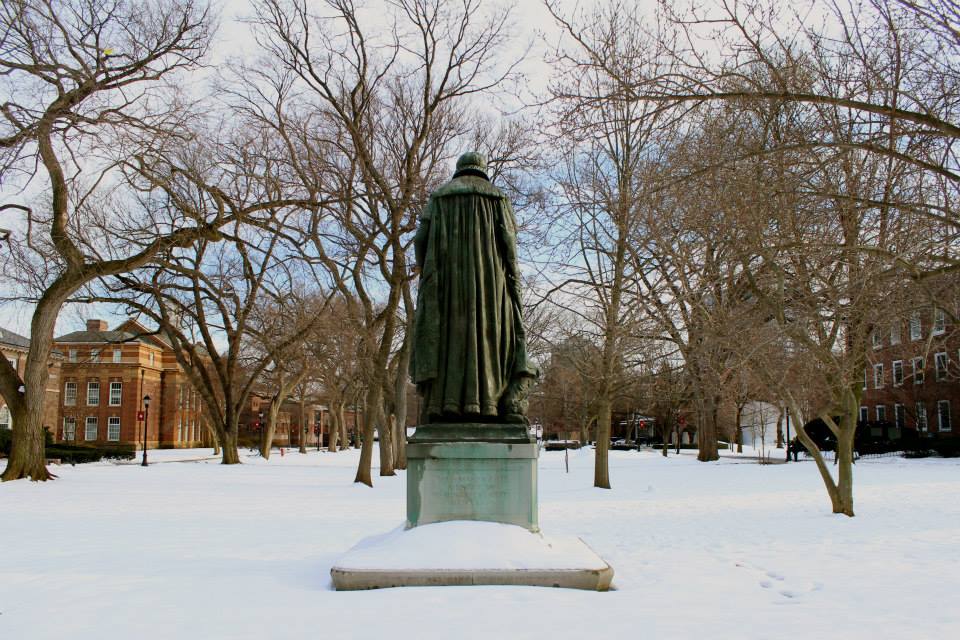
Hannay: I think that’s such an interesting perspective too because I feel like in Academia in general. I loved school, I love going to classes but I think that when you’re in a class learning about something you sometimes feel like you’re not getting the business, the real world side of it. There might be things that are missing. I think some of that does come with experience it and having jobs in the real world. Not just in journalism but in a lot of Industries, learning a bit more about how to approach things from an economical standpoint and how to grow a business, this is especially because so many people are leaving school and then working at start-ups whether they’re in journalism or otherwise…
Galperin: Was your background in advertising before, as an undergrad?
Hannay: No, I was an English major, and a French major.
Galperin: That’s what I thought I remembered. Did feel the same way when you were getting your English undergrad?
Hannay: I feel like English is particularly idealistic, so in that way I felt like I didn’t quite know what I wanted to do, and I was worried about taking a particular track. I thought about journalism but that’s one track, and what if I don’t like it? In some ways, I think that universities in general could benefit from having better programs that help students who feel like they have a lot of skills but aren’t quite sure how to apply them. To really think about: How can I translate this into a career? What are the options? When I graduated I start working at startups and I was like “Oh man, computer programing is awesome! I never even thought about computers that way when I was an undergrad. Currently I’m taking a class to learn user experience design it’s very applicable to the real world on but it’s so interesting because the class that I’m taking as a grad class at the University, even in this class we’re doing our projects in a way that we’re dotting all of the I’s and crossing all the t’s, but in a real company I feel like it would be a little bit differently.
Galperin: I think this is the thing that education does, it offers you frameworks to execute your own projects or ideas or someone else’s projects or ideas. I agree with you, it’s different in the word. That’s how I feel frankly, about some of my skillsets. In theory, I’ve got it all down-pat, but just don’t throw me in the field please.
Hannay: It is different. Sort of related; in the article that you posted on Medium, you referred to another article that talks about using design thinking processes in journalism. For those who aren’t as familiar with the idea; design thinking is a term used a lot in the business world which basically refers to the process of rapid creation, like prototyping, testing, iterating, testing again, updating, iterating, and so on to reach a certain goal, product, or a solution to a problem Without wasting a lot of time or resources on ideas that don’t work. With that being said, how do you think design thinking applies to journalism and maybe to local journalism in particular?
Galperin: Design thinking’s greatest strength that it puts users first and you find out what the user needs and you create that project with them instead of for them, which is an adage used by Josh Sterns over at the Democracy Fund so I have to make sure I site him, done right, with some luck, design thinking guarantees success and engagement with your product. I think that’s the case for local journalism. An easy example is designing local news and journalism for consumption on mobile devices. It’s a cliché example, but it’s an easy one. People are people using their thumbs to engage with the same information that people are printing in physical newspapers, so let’s focus on thumbs and screens the size of your palm. What does the user want from us? Where are they using our product? How can we better deliver it to them there? I think an audience is an organization’s greatest resource and you turn to them and say “Hey guys how can we do better? What do you want from us? Where are we not working?” All the questions that an organization has should be directly asked to the consumer or whatever you want to call the patron. I think that journalism has a streak of humbleness within it that would allow placing our ego aside to ask our communities what they need from us. That’s something that’s very likely and very possible and could be very effective and helpful to the future of journalism and media.
Hannay: I think most journalists are naturally inquisitive anyway so in some ways they’re some of the best equipped to go out and talk to people and be like, “What more can we do? Tell me about how you consume news. What you’re missing and what you would really like.” I love that because I’m learning about user experience design and I’m learning a lot about journalism and there is are weird connections in ways you wouldn’t necessarily automatically think.
Galperin: To tie this back to something we discussed about in higher education; I wish somebody told me about user-centered design in high school. That would have radically change, maybe not necessarily my path, but certainly the way I approached executing and doing things that I was interested in. I think user-centered design is another example of the sort of thing that colleges could use and every sort of field.
Hannay: I agree. In academia it does seem like you have to pick a major, but combining different things from different schools of knowledge I think can really benefit. Combining user experience design with journalism could be a really interesting project. Especially for a local community. Speaking of local communities, I definitely want to ask you about New Jersey. Obviously you live in New Jersey and went to school in New Jersey. Are you originally from New Jersey as well?
Galperin: I was born in Moscow, in Russia, but I was raised in New Jersey.
Hannay: So you’re mostly native to New Jersey. You’re focus in your writing and in your projects on New Jersey journalists and in the Sustain Local conference was in New Jersey and it attracted people from many parts of the country, but a lot of people from New Jersey as well. It’s not like they have a conference like that for local journalists in every state. Do you think New Jersey stands out as a special place for local journalism? And if so, why?
Galperin: Well people smarter than me tell me that New Jersey stands out So I would tend to say “Yes.” I certainly feel that’s true of my experience. I spent two or three years now in local journalism in New Jersey and study local journalism around the country on occasion. The conversations about the vibrance and often volatility and the Innovation happening in local journalism often happens around New Jersey. There are organizations like the Center for Cooperative Media, which is engaged in the industry here. The [unintelligible] Foundation is an important pillar civic life in New Jersey both in journalism and media and in the Arts and an education. The Knight Foundation is vested in New Jersey. New Jersey seems to be a hotbed for the industry and experimentation in it. I think New Jersey does stand out. I hope that the new journalism equation and sustainability is discovered here because I think the people of New Jersey need better access to news and information so they can make more effective decisions about civic life and social life.
Hannay: it almost seems like it’s one of those things. There are already a lot of influential and smart people in the industry there, then it attracts more people which attracts more people. As a person from New Jersey can you tell me about your hometown or home state? What do you love about a particular? What do you love about your local place for you?
Galperin: What do I like about my local place? My hometown of Fair Lawn New Jersey. The name is Fair Lawn the history of that name is: There was a millionaire named something Acromion and he owned this huge property in Fair Lawn a hundred years ago and it took up a quarter of the town. The property was this beautiful clean manicured front lawn to his mansion. As far as I’m aware people would pass this area and say, “Would you look at that fair lawn?” And it stuck. And in 1924 the borough of Fair Lawn was incorporated and it’s been Fair Lawn ever since. In the center of town is this area called Radburn which was the first planned Community for car travel. So all of the houses, their backyards lead to a central park which students can use to access their School without having a cross a road that a car drives on.
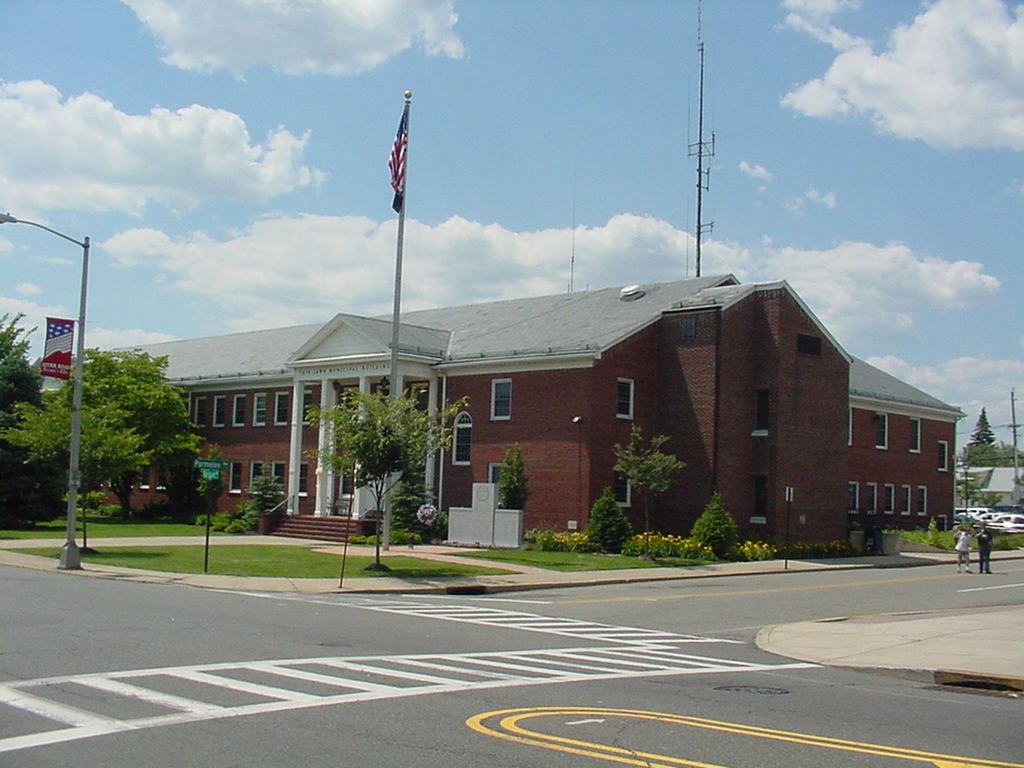
Hannay: What a fun feature.
Galperin: Innovation, I guess was happening in my hometown a hundred. years ago. I think maybe that’s why I like it. I have friends here, I grew up here I go into the hills of Northern New Jersey, spend time there like it’s my backyard. I think it’s a nice place to live. In fact, I’ll tie this up in a pretty bow, the motto for Fair Lawn, which was submitted by a 4th grader in a competition is: “Fair Lawn New Jersey, a great place to visit, a better a better place to live.”
Hannay: If the nine-year-olds are saying it, it must be true. Do you guys all have to have really nice lawns? Is there pressure now because of your name?
Galperin: We have lawns. They’re just regular lawns. We do have some big fields now that I think about it, some random really huge spaces that are all grass covered. So people can walk by and say, “That’s a really Fair Lawn.”
Hannay: So you come from a place particularly in New Jersey that has local stories about it too. As a journalist who’s really just starting out in the field, I feel like your career trajectory will probably really reflect the 2.0 journalism. In that vein options and areas of growth do you see for yourself and for your peers? I personally have a lot of hope and excitement for the field of Journalism but I just hear that the New York Times was making Cuts to their staff. So in a time when our biggest outlets are making cuts, where do you see the industry growing for yourself and for people that are in your program?
Galperin: I think I think I have two responses to that. I think the first one is; we have to start thinking about what is the core service that local journalism and local journalists provide? And how can we provide that same service that I would argue is access to news and information which helps us make decisions ab out the way we live our lives for the better. How can we make that happen without using the traditional mechanisms of a local publisher or a major news chain? Once example could be the volunteer ambulance corps model that some local communities have where volunteers devote hundreds of hours per year providing a service to their local communities which is ambulance services. Can there be a citizen journalism corps whose duty is to report on the goings-on at city council meetings? So that’s one way is thinking about providing the same service, but in different ways. I think the second thing ultimately is this revenue question. We talk about how we can afford to make journalism? I think that is the ultimate question of our time because I think journalism is a foundation of the democratic process and of democracy as much so as we have one. I think figuring that out is a key component. I have ideas and I have projects in mind but I think Henry Lewis Gates Jr. said “I have a lot of great ideas, I just need somebody to pay for them.” Which is the exact same way I feel.
Hannay: I get that. That can go back to design thinking too. How can those ideas be tested on a small scale and see if they work before investing large-scale?
Galperin: Now I have a question for you, what is your perspective as someone in advertising on the direction of advertising in local journalism? I would argue that the value of ad-space is decreasing and one day, it won’t be worthless but it’ll be close to worthless.
Hannay: I was thinking about that as you were answering because it’s not like no one reads the news any more. I pay attention to news a lot, especially lately. People use social networks to talk about it so people are often talking about current events so it’s not like journalism doesn’t have a place in our society. I just think people have gotten used to not paying for it. Myself included, you hit a paywall and you just go into incognito mode and read the same article. I think people should be paying for it, I’m not condoning that behavior but when it’s so easy, you forget. On the other hand, I think as someone who is familiar with the marketing space there’s also a lot of pushback from people in general people don’t like their privacy being violated in terms of advertisers. You can look up exactly how Facebook sees you and what they tell marketers about you. There’s this saying in startups, “If you aren’t paying for it, you are the product.” I think you’re either paying for something or you’re being advertised to. It’s an interesting trap that a lot of consumers, myself included, fall into. We’ve work our way into the best of both worlds and something has to give at some point. Because people do have to make money for what they do.
Galperin: You’re right. I think the connection you made there to the startup world is very profound in the case of news consumers and news consumption. I think one example in terms of “How can I pay for news?” is, and I’m going to plug my own project, is InfoDistricts. It seeks to create what are called “special districts” things like your fire department, your school, waste management, your water, is funded through small fees assessed through in some cases property owners, in some cases sales tax to fund a public service that the community has previously decided via referendum or elected officials, a public service that the community needs like a fire department or Trail maintenance. Boulder Colorado has state parks and county parks. They assessed a fee to maintain trails which drive tourism. Can we do the same thing with journalism and media? Can we create community publications funded by $5, $20 per person per year in the town of 35,000 people to do user-centered design and build local publisher or a local news and information service that is particularly unique to the needs of those communities? Does that make sense? I’m practicing pitching that.
Hannay: It did. It sounds awesome. And I think it’s the kind of thing that’s needed. It sounds awesome in theory and I’m excited to see how it ends up in practice.
Galperin: Well you’re the most excited anyone has been. Most people are just think that seems wonky don’t care to read about that anymore.
Hannay: I think in the direction we were talking about earlier with the ProPublica, journalists has one side that’s very “sexy.” The breaking story. In-depth storytelling, which is interesting. I think it does perform a public service of information gathering and a side-effect of doing reporting is that you have tons of information. Using that information for supporting a lot of the other services that journalism provides is a smart way to think about it. Do you have a website or something people can look at?
Galperin: I think that’s a plug too far, but I’ll do it anyway infodistricts.org. It’s a Medium publication which is also a really interesting space to engage in conversation around ideas the reason it’s on Medium. We want people to engage the idea and give us feedback just like you gave me just now.
Hannay: Cool I will check it out. I’ll send you guys more feedback if I see any. Final question, this is something I asked a lot of people and I always find it that there’s interesting answers. If you could have lunch with anyone in your industry any journalist or writer, whose brain you want to pick over lunch? Who would that be? Who inspires you? Who would you want to learn from?
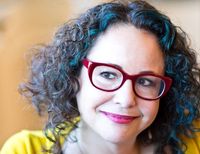
Galperin: I’d have to say Brooke Gladstone She is a host on The Media which is a program produced by WNYC which is the New York public radio station. Brooke recently completed series on poverty in America which I think is something that the media doesn’t talk about enough and also contributes to. I was really happy to see her use her bully pulpit as a media commentator to do the job that media has failed to do. In general, The Media to me is a vital part of my news consumption but also my critical thinking consumption. I think that the questions they ask on that program are the questions that we’ve been talking about here. What is the future of local journalism? What does social media mean in a presidential campaign? How has media failed the public in this scenario or another one? So that’s that person I think. For a second I thought about Elon Musk or Mark Zuckerberg. I have no heat toward Elon Musk or Mark Zuckerberg, I just don’t know how productive of a conversation that would be.
Hannay: I feel like Elon Musk would be, I think someone who is a brilliant business person but also has big ideas would have many cool things. I feel like you could throw some your own ideas at them they would come back to you with “What if you did it this way?” nd you feel like that’s the solution to everything.
Galperin: You know what the solution to everything is? I think this is something that both Elon Musk and Mark Zuckerberg could both supply. It’s just money. Just a little pinch to help a local journalist out here in New Jersey.
Hannay: Maybe this podcast will get to them.
Galperin: If you have that kind of reach Megan, I would have prepared better.
Hannay: Well you never know. I would love of Elon Musk or Mark Zuckerberg listened to the podcast. In the meantime, In The Media is the name of the podcast you said?
Galperin: On The Media.
Hannay: I will subscribe to that, it sounds really cool. Simon, thank you so much for taking time today.
Galperin: Before you go, I’m sorry I’m not going to leave until you tell me who you would want to have lunch with.
Hannay: I feel like this is a really hard question to answer…
Galperin: I have a better question for you, who would you want to have for breakfast lunch or dinner?
Hannay: For breakfast you would want to have with someone who inspires you. For dinner you would want someone who you can just talk with for a long time. The first person that popped into my head and I feel like this would be better for dinner or drinks. I am a super huge fan of this online, it’s kind of an advice columnist, her name is Heather Havrilesky. People ask her about all sorts of life questions but then she’ll go into philosophical-level answers. She just feels like she would be an awesome older sister type of person to just have drinks with. So that would be my end of day chill session. But for earlier in the day I feel like you would have to be someone in the podcasting industry. I’m very much into Start-up the podcast. It’s a start up for podcasting so for journalists who are trying to raise money and do it as a start-up. I feel like Alex Bloomberg would be an interesting person who’s brain to pick, he’s so open and transparent. I feel like learning from people who are in the business of media and doing it in cool ways would be interesting to talk to.
Galperin: Was that lunch for you?
Hannay: Could it be brunch?
Galperin: You can do brunch but you still have to do breakfast. You can’t have brunch without having breakfast first.
Hannay: There would have to be coffee at the beginning.
Galperin: I think for breakfast I would do Barack Obama.
Hannay: Well yes, if you could anyone.
Galperin: Oh I didn’t know…
Hannay: There are no rules.
Galperin: I would do breakfast with Barack, and I would do lunch with somebody like Brooke Gladstone, that would be cool. And I think dinner, I would want to be at the table, not personally out to dinner with, but at the table with John Stewart. So I’m sitting in a group and John Stewart is one of the people in the group. And maybe Steven Colbert is there too. And we’re having drinks.
Hannay: I get that. I feel like maybe one-on-one with someone like John Stewart would, he would be the kind of person who would, you want it to be five or six people. I get that. That would be a good one too.
Galperin: But you have to come up with breakfast still. So you owe me that for the next time.
Hannay: I will think about it. I will mention it in the wrap-up I do at the end of the podcast, then I will let you know.
Galperin: you’ve guaranteed one listener.
Hannay: Alright, I’ll do that. Simon, thank you so much.
Galperin: Yes of course.
